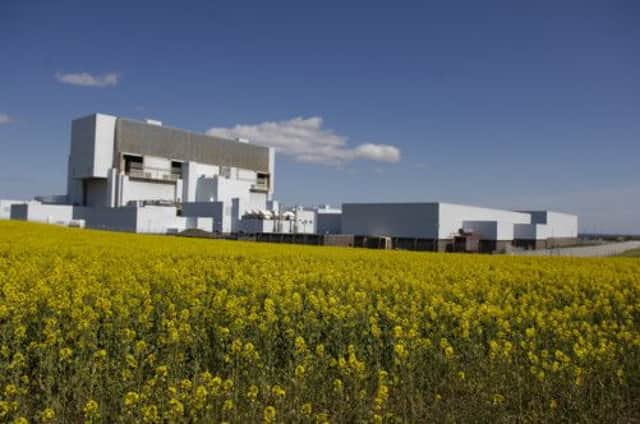Only nuclear power ticks all the boxes


But there is a growing realisation that this simply pushes up electricity bills while reducing energy security and making it increasingly likely that the lights will go out.
This might be feasible when it is English consumers who are bearing the brunt, but an independent Scotland would be crippled by shouldering the costs of renewable energy alone.
Advertisement
Hide AdAdvertisement
Hide AdWith this in mind, we should ask what has driven the Scottish Government to conduct this “act of unpardonable folly”. The answer is that, along with other EU member states, the UK is currently committed to a radical programme to reduce the emission of carbon dioxide, and wild and windy Scotland has – with the enthusiastic backing of the SNP – agreed to host the lion’s share of wind farms. Leaving aside for now questions of both the need for such drastic action and the chances of success in a global context, the fact remains that current policy is both expensive and ineffective.
European politicians have made life difficult by deciding that renewable energy from wind, waves, the sun or wood is good, while the one proven, effective way to reduce emissions – nuclear – is bad.
Emissions
In a common sense world, an emissions target would be set and power companies and governments would find the most cost-effective way to meet it.
However, green lobbyists have persuaded naïve policymakers that only renewables will do, so the playing field has tilted very sharply away from the only reliable source of low-carbon electricity we have.
Consider this: according to the World Bank, in 2009, each person in the UK was responsible for the emission of about 7.7 tonnes of carbon dioxide every year. In comparison, the figure for French citizens was only 5.6 tonnes, due largely to the fact that most French electricity is generated by nuclear stations. French citizens have enjoyed reasonably priced, clean, unobtrusive and reliable electricity for decades.
Meanwhile, Scotland is joining Denmark and Germany in covering the countryside with huge numbers of unsightly wind turbines.
Nuclear power has had a bad press, but in fact has an excellent safety record. Even Chernobyl, just about the worst possible accident which could be imagined, which only happened because the plant was poorly-designed and obsolete, had a much smaller impact on people and the environment than some campaigning groups would have us believe.
Nuclear power is also burdened with an unnecessarily strict radiation exposure limit, set in the early days of development on the worst-case assumption that there was no safe dose for radiation.
Advertisement
Hide AdAdvertisement
Hide AdIn practice, we now know the body is capable of handling significantly higher doses than regulations allow, with no damage. Much higher doses are regularly used for medical treatment, and we are all subjected to environmental radiation in our everyday lives.
Impact
Nuclear power plants have a relatively small impact on the local environment. The footprint of Torness is quite modest for its 1.3GW output: it is more compact than an equivalent coal-fired station for example.
On the other hand, building enough wind turbines to replace that capacity would require about 10,000 hectares of land. However, since they only produce about a quarter of their rated output over a full year, we would need four times the number, covering 40,000 hectares. That is 400 square kilometres, considerably larger than the city of Edinburgh, just to replace one power station.
Even then, conventional generating backup would be needed to replace the entire output of the wind farm when there was too little (or too much) wind.
Waste is often cited as a reason to avoid nuclear power, but this is not such a problem as some imagine.
First, much of what comes out of a reactor is spent fuel: enriched uranium which can no longer sustain a chain reaction in the reactor core. Only a small amount of the energy in the uranium has been used, and the remainder can be reprocessed into fresh fuel for a further cycle of energy generation. There remains a small volume of high level waste which can be stored safely deep underground.
Admittedly, construction costs for nuclear reactors are high but, with low fuel costs and an operational life of up to 60 years (at least three times that of wind turbines), and properly compared, nuclear electricity costs a great deal less than any form of renewables.
Given all this, the Scottish Government has to give a clear answer to a simple question: why not nuclear?
• Martin Livermore is director of The Scientific Alliance www.scientific-alliance.org